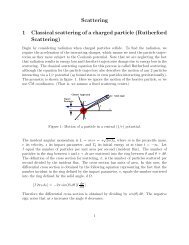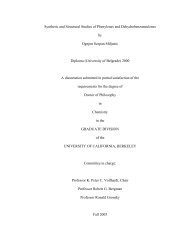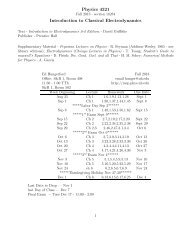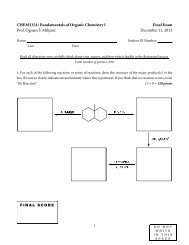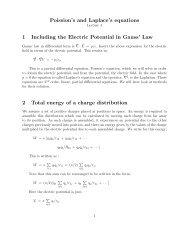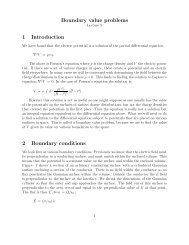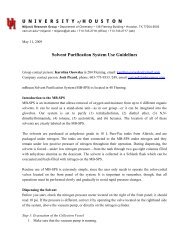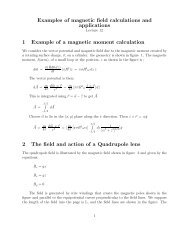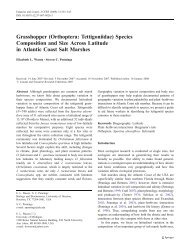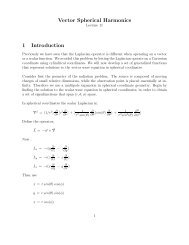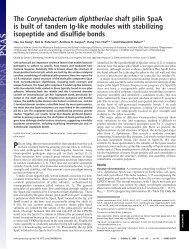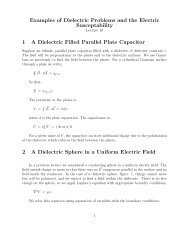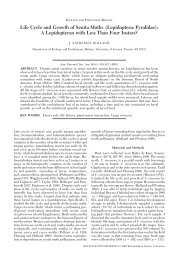Solution to Laplace's Equation in Cylindrical Coordinates 1 ...
Solution to Laplace's Equation in Cylindrical Coordinates 1 ...
Solution to Laplace's Equation in Cylindrical Coordinates 1 ...
Create successful ePaper yourself
Turn your PDF publications into a flip-book with our unique Google optimized e-Paper software.
J ν (x) = ∞ ∑<br />
s=0<br />
(−1) s<br />
s!(ν + s)! (x/2)ν+2s = xν<br />
2 n n! − x ν+2<br />
2 ν+2 (ν + 1)! + · · ·<br />
For <strong>in</strong>tegral values of ν one can show J −ν = (−1) ν J ν . The Bessel functions also satisfy the<br />
recurrence relations;<br />
J ν−1 (x) + J ν+1 (x) = ν x J ν(x)<br />
J ν−1 (x) = x ν J ν(x) + dJ ν<br />
dx<br />
d<br />
dx [xν J ν (x)] = x ν J ν−1<br />
At times an <strong>in</strong>tegral representation is useful.<br />
J ν (x) = (1/π)<br />
π∫<br />
0<br />
dθ e ix cos(θ) cos(νθ)<br />
The Bessel functions are orthogonal;<br />
∞∫<br />
0<br />
∫ a<br />
0<br />
kdk J ν (kρ) J ν (kρ ′ ) = δ(r − r ′ )/r<br />
ρdρ J ν (α νk ρ/a) J ν (α ′ νk ρ/a) = (a2 /2)[J ν+1 (α νk )] 2 δ kk ′<br />
In the above α νk are the zeros of the Bessel function of order ν where k orders these zeros.<br />
As the Bessel functions form a complete set, any function may be expanded <strong>in</strong> a Bessel series<br />
or <strong>in</strong>tegral for an <strong>in</strong>f<strong>in</strong>ite space.<br />
F(ρ) = ∫ kdk A(k) J ν (kρ)<br />
3 Examples<br />
We f<strong>in</strong>d the solution for the <strong>in</strong>terior of a cyl<strong>in</strong>drical shell with the <strong>to</strong>p end cap held at a<br />
potential V = V 0 (ρ) and all the other surfaces grounded, Figure 2. The solution we seek<br />
has the form;<br />
V = ∑ νn<br />
A νkn J ν (k n ρ)s<strong>in</strong>h(k n z)e iνφ<br />
In this case the solution is <strong>in</strong>dependent of the angle φ so we take ν = 0. Note that we have<br />
not <strong>in</strong>cluded N ν <strong>in</strong> the solution because we want it <strong>to</strong> be f<strong>in</strong>ite as ρ = 0. Also we have chosen<br />
s<strong>in</strong>h(k n z) <strong>to</strong> satisfy the boundary condition at z = 0. The reduced solution is;<br />
3




